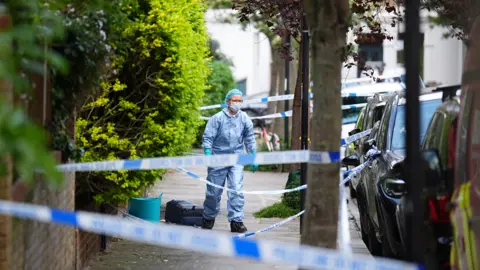A significant incident has recently unfolded involving Prime Minister Sir Keir Starmer, as a 21-year-old man named Roman Lavrynovch has been charged in connection with multiple arson fires. These fires specifically targeted properties associated with Starmer, as reported by the Metropolitan Police. The details surrounding the case have raised concerns given the serious nature of the incidents and their implications on public safety.
Lavrynovch, identified as a Ukrainian national, faces three counts of arson with intent to endanger life. The charges were formally issued following his arrest in the early hours of Tuesday at a location in Sydenham, located in south-east London. He is scheduled to make his first appearance before Westminster Magistrates’ Court on Friday, where legal proceedings will commence to address the charges levied against him.
The allegations stem from three separate incidents that transpired over a four-day period. The first involved a vehicle fire in Kentish Town, a neighborhood in north London. This was closely followed by a fire at Prime Minister Starmer’s private residence on the same street, and a third incident at a previous address where Lavrynovch was known to have lived in north-west London. The connection between the fires and a high-profile public figure has prompted the investigation to be undertaken by the Metropolitan Police’s Counter Terrorism Command, highlighting the seriousness with which these events are taken.
On May 12, emergency services were dispatched to the home in Kentish Town that Sir Keir Starmer had occupied prior to his ascent to the role of Prime Minister and subsequent relocation to 10 Downing Street. Reports indicated that the London Fire Brigade alerted the police to a fire that broke out at approximately 1:35 AM. Fortunately, while the fire caused damage to the property’s entrance, no injuries were reported, leading investigators to assess the situation amidst the surrounding circumstances.
Understanding the context requires an examination of the timeline of events. Prior to the fire at Starmer’s residence, a car linked to him was set ablaze on May 8, just days before the incident at his house. The following day, on May 11, firefighters were also called to extinguish a small fire at the front door of a house that had been converted into flats in nearby Islington. This location holds particular relevance as it is noted that Starmer had resided there during the 1990s, further intensifying the investigation’s focus on his historical ties to the area.
The potential motivations behind these acts of arson remain speculative at this stage. Nevertheless, the fact that these fires were aimed at properties connected to a prominent political figure has raised alarm among officials, enforcing the view that such acts are not merely random occurrences but potentially targeted threats. Given the prime minister’s position and its implications, the security surrounding public figures cannot be overstated.
As the investigation unfolds, it reveals the extensive measures taken to ensure public safety and address threats against individuals in political office. The focus of the Met’s Counter Terrorism Command on this specific case underscores the importance of vigilance and the serious ramifications of such acts of violence.
The ramifications of these incidents are vast, touching not only upon the immediate safety of Sir Keir Starmer and his household but presenting a broader commentary on political security in the UK. With increasing tensions and polarization in political discourse, ensuring safety for public figures becomes ever more pertinent. The public’s reception of these events will likely shape dialogue surrounding political safety measures as well as the cooperative efforts between law enforcement and community leaders to foster a secure environment for all citizens.



